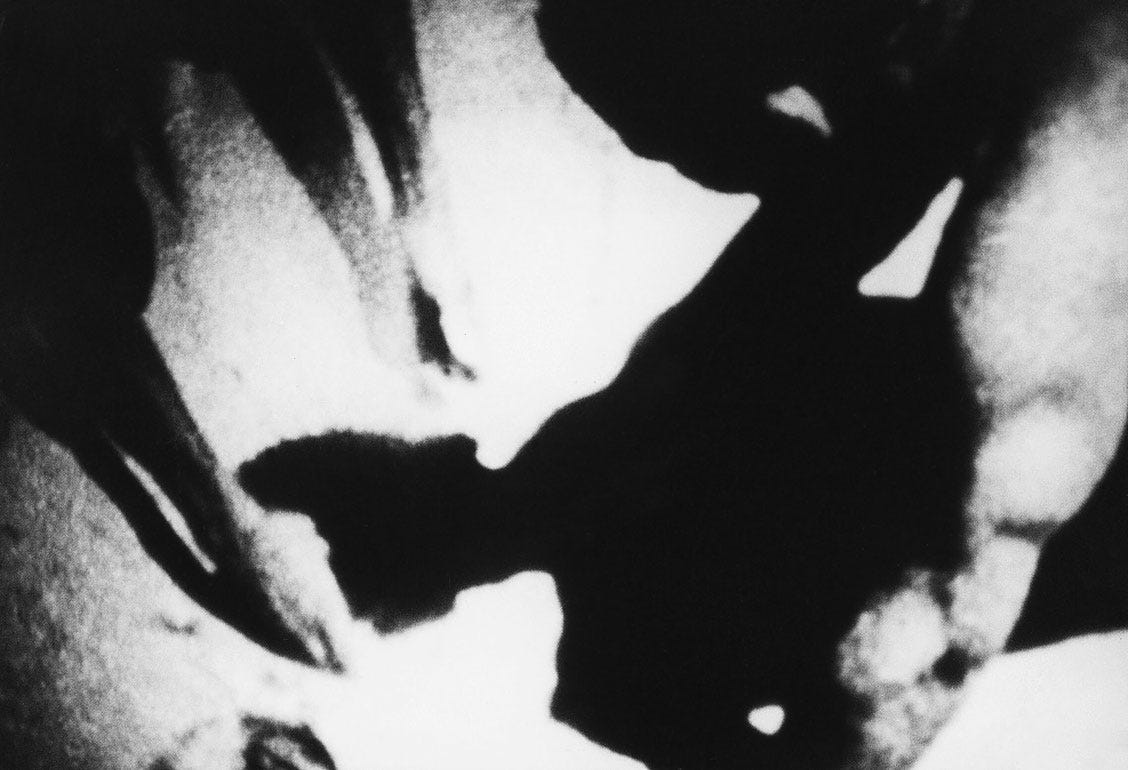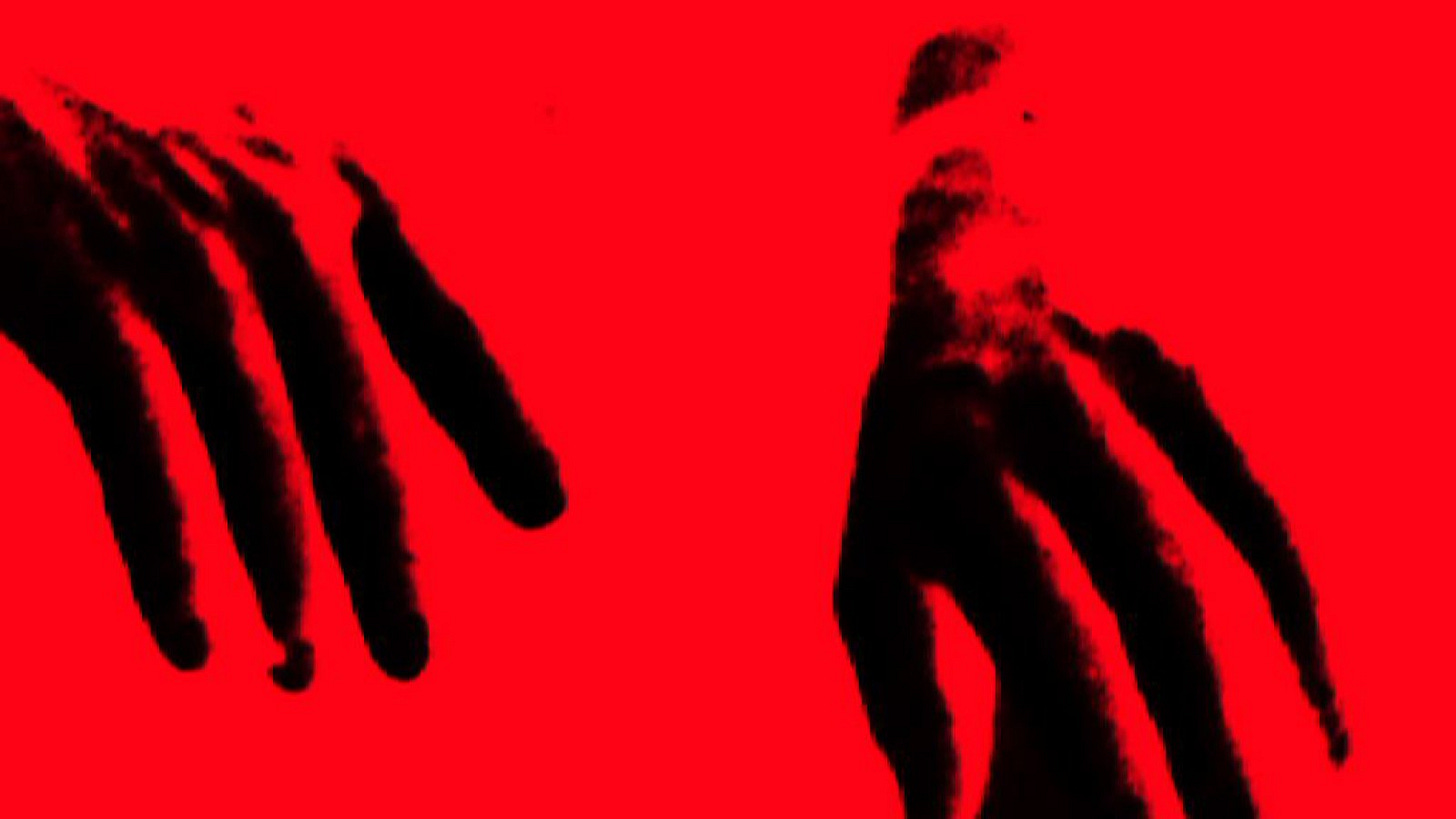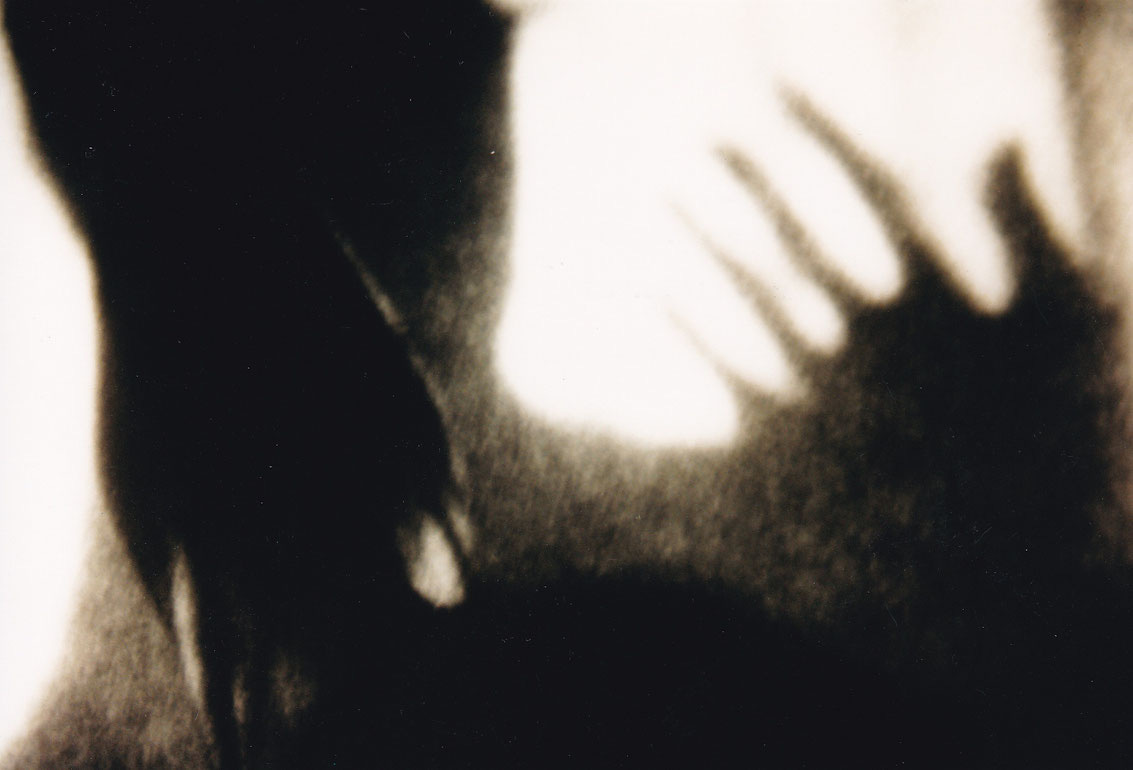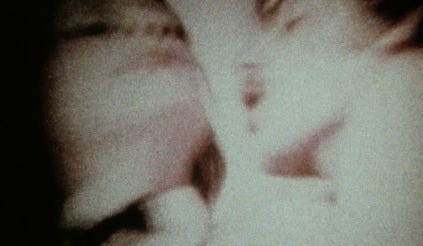The Vienesse Actionists took their clothes off so their filmmaking brethren could flay themselves – or so it feels. The destructive-obliterating methodology of actionism — thinking of Günter Brus and his 1968 masturbatory defilement (which ultimately led to his imprisonment) — plucked a nerve of an Austrian establishment that was – and perhaps still is — nervous about anything that isn’t squarely ‘konventionell’. Don’t open that cupboard, please; or that dungeon basement. Meanwhile, in literature, Thomas Bernhard was opening those doors and cupboards – and screaming catastrophically into them.
Enter Dietmar Brehm. His exhausted and entropic vision — a sight which has degraded and fallen away; blinking in slow, heavy bursts. The aesthetic strategies pursued by Brehm — he’s been active since 1967 — scratch at the image’s filmed texture; it is a scab that he picks at. His glut of high-contrast and pulverized images — made diabolical by all kinds of pulsing grain — make him not unlike the early Portabella, and draw obvious parallels with fellow avant-garde countryman Peter Tscherkassky (thinking of the latter’s Dream Work [2001] and The Exquisite Corpse [2015]). Reaching back, the flicker-strobe also feels intellectually indebted — shaking hands; nodding solemnly — with Peter Kubelka; schnitzel perfectionist and grand scion of films that are all fucked up.
But where Kubelka is structural and precise, Brehm is blown-out and gorey. He has spoken of his films — like the distressing Blicklust (1992) — as a “pump of corpses”; a kind of ecstatic rot that has the smog of a particularly gothick Halloween hanging over them. In Perfekt II (1984) there are bloated flies, creepy-crawly spiders, parts of bodies zoomed in to a point of corporeal unheimlich. In Blicklust, he obsesses over visions of surgery and sex; acts of penetration that are blearily match-cut with incisions and extractions.
There’s colour too, of course; both muted and murky (as with MIX-3 [2000]) and exaggeratedly explosive (like PRAXIS 3-7 [2008]). Throughout, his ambition is to make what he has called – haltingly – a kind of “horror film”. Blicklust (1992) has the twitchingly tabular effect of flicking through TV channels late at night (he’s said he likes to watch TV with the sound off); a dirge of morbid worlds that shudder into being on a kicked-in CRT television standing on a bachelor’s nightstand.
Beds are important here — after all, fucking is never far from his remixological mind; rephotographing all kinds of pornographic smut that, in Blicklust, he had been sent — it seems anonymously — in a package of super-8 S/M. The tied-up woman was a natural fit for his found-footage archive and the surgical film he’d elsewhere shot (or salvaged; it’s not quite clear). In his own words, “I couldn’t resist”.
The corporeal detritus itself — tied-up woman, surgical incisions, close-up genitals, fingers entering a muckily bearded mouth — find their confrontational foil in scenes of industrial and environmental distress; a bridge swaying convulsively in high winds; a tree bending in a storm; a car striking another car. Perfekt 1-3 (1996) is undercut with storm sounds, banging-pinging music — clogged-up and tinny — and fudgie blooms of tape-machine mechanics. Brehm slows things down; bodies flicker forward and back; the smallest gestures taking country miles to unfold. We hurriedly wait for a catharsis/reveal, but nothing is coming — not even the penises he sometimes cuts to. These films have no ends or beginnings and there is nothing, so far as I can tell, to structurally organize his cinema; it is a kind of soupy swirling without bridge or crescendo. He cuts to faces, strobing slowly in and out of their soil of contrast; a woman brings her hands to her face, seeming to scream — or gasp in pleasure. He wants us to remain interpretively unsure.
Throughout, Brehm pays respect to the origins of his found footage; often signaling the place — and time — where the original film was shot. In Perfekt III, the source material dates to 1973 (Brehm’s film was completed in 1984); he draws our attention to this lacunae of time — between the act of ‘first’ filming and his latter manipulation of what he has found. Erosion has already set in; time is corrugated like a cheap tin can. In Fit (2004) he reminds us that his found footage was taken from a 1960s educational film “presumably about so-called electrical body forces”. He reversed the footage; imbuing it with a moody reddish tint.
What is Brehm trying to do? I could suggest that he’s trying to ‘get at’ the mediation that occurs when very real ‘stuff’ is subjected to the unreal distancing effect of becoming a ‘film’. He is also aping-pastiching not television itself — or film, for that matter — but the experience of being sat there, half-amused, a little disgusted, as we consume the “swarm of images” that flood toward us. I’m using Brakhage’s terminology here. They are lacunary, imperfect, insufficient. They are not what life is; they are what the camera – and the editing knife (and the editing glue, and tape, and the fingerprints that are left over from these operations) — give to us. In this, Brehm joins a big raucous cast of like-minded estrangement merchants.
Yet, we can still sort-of glimpse what is happening, and this becomes a kind of perverse suspense for Brehm; we’re not held in any kind of narrative tension (“where is this story going?”, “how will it resolve itself?”), but — rather — a kind of interpretive tension: what on earth am I actually looking at? The Murder Mystery (1992) makes sly nudges toward this; irony-jacking the film’s Hitchcokian title before leaving us dumb and scrabbling through the resulting images themselves. His more recent films have mostly ditched these allusive titles, opting instead for serialized or sterile names like MIX-3 (2000), Basis-pH (2004), and Fit (2004). In this, he’s keen to bring us back to death. For Party (1995), he jumbled a mess of found footage party footage together; “hallucinating” them “into a matrix” that stutters between function (doing stuff) and nonfunction (not doing stuff). It’s zombie work; it always was.
His point — and I’m sure there is a point; scribbled down from a half-murky dream — is that this stuff is already out there: film is not life, but film is not-not life. If his cinema is grim, gross, and perverted, then he can only throw his hands up and say: well, it was already out there; I’m just throwing it back at you. In this, you can imagine a same-same thought that must have passed through Günter Brus’ head in 1968, mid-stroke, as he “defiled” symbols of the Austrian state. “Don’t like what you see? I’m only showing you what you are”.
If you liked this newsletter then please consider liking, sharing or subscribing. It’s lonely here.












